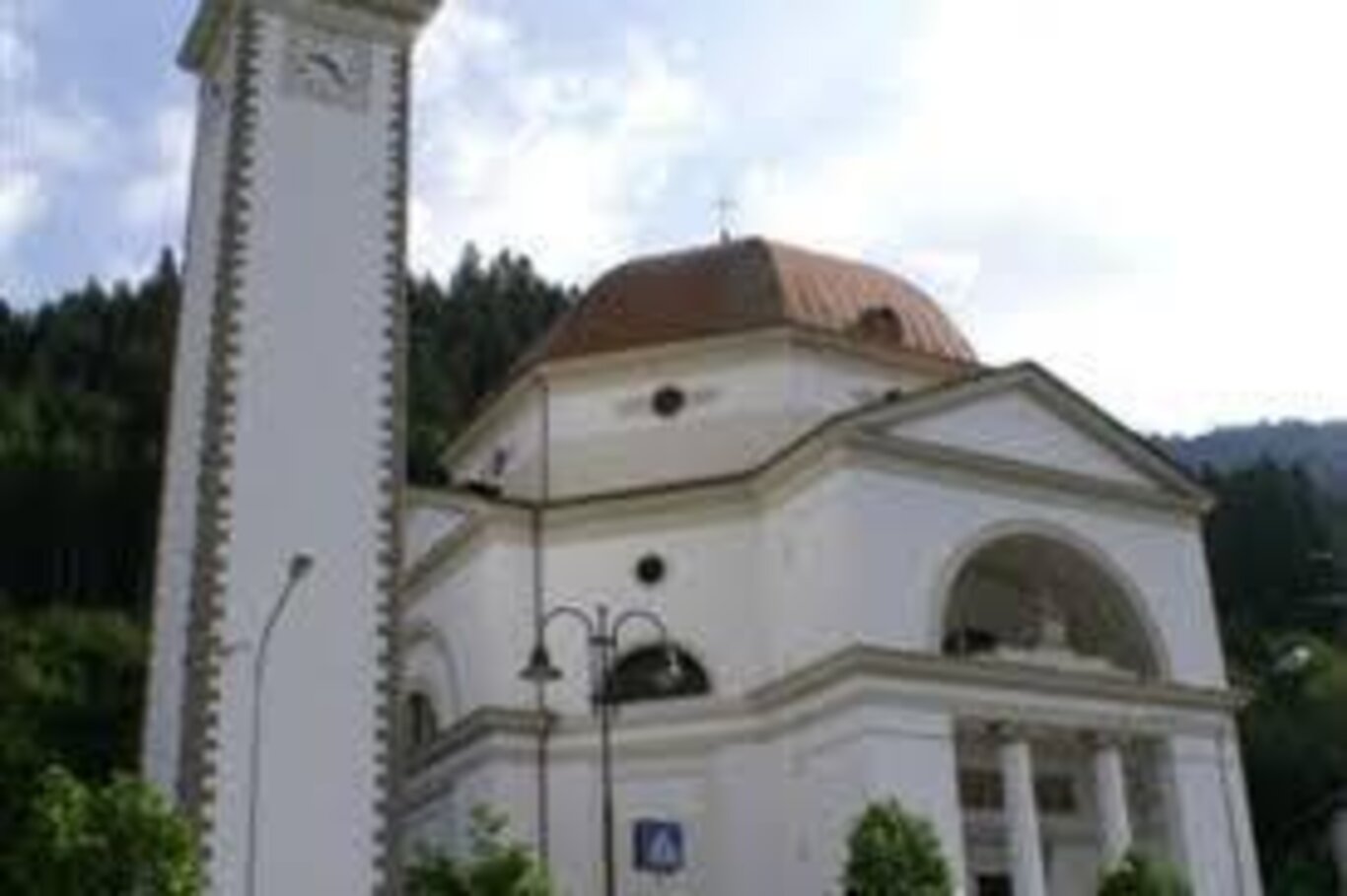In 1439, a new church was consecrated in Gothic style, with a single nave and a pentagonal apse facing east. The apse, leaning against the bell tower, was richly frescoed with stories of St. Lucan. These frescoes remained under the weather until 1925, when construction of the present bell tower, designed by architect Antonio Alpago Novello, began. As still in use in Val Pusteria, the cemetery, or 'cortina', was located in the churchyard. A wooden portico was added as a solution to protect the worshippers, who had become more numerous as the population increased. To solve this problem once and for all, the municipality resolved in 1839 to build a new church next to the old one. The task was entrusted to architect Giovanni Segusini and the project was approved in 1847. The foundation stone was laid four years later.
The building, with an octagonal plan in pure neoclassical style, is imposing and, when finished, arouses the admiration and wonder of all the people of Auronzo. The total cost of the work was, in the currency of the time, three hundred thousand liras. Numerous artists, craftsmen and carvers participated in the furnishing and decoration of the interior. They include the painter Giovanni De Min and the sculptor Valentino Panciera Besarel. Segusini himself designed the chandelier placed in the centre of the octagon. The organ made in 1859 by Giovanni Battista De Lorenzi is of exquisite workmanship. The entrance is preceded by a pronaos with two Ionic-style columns supporting an entablature on which is placed the statue of St Lucan sitting on the back of a bear. Legend has it that St Lucan, then bishop of Sabiona, set out on a journey to the Holy See to clear himself of the accusation of heresy. During a stopover, upon waking up, the saint found the remains of his horse, mauled by a bear. The bishop managed to tame the animal, which, with bowed head, was saddled and bridled. Entering Rome riding the bear was considered one of the many miracles performed by the saint along the way and therefore an unmistakable sign of his innocence.
